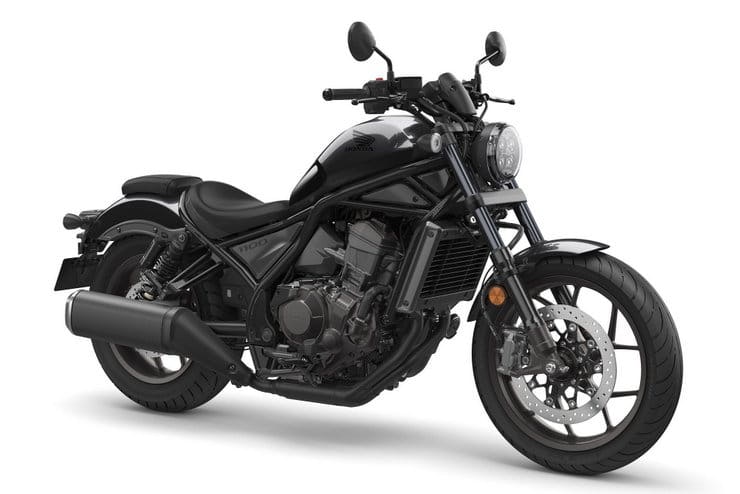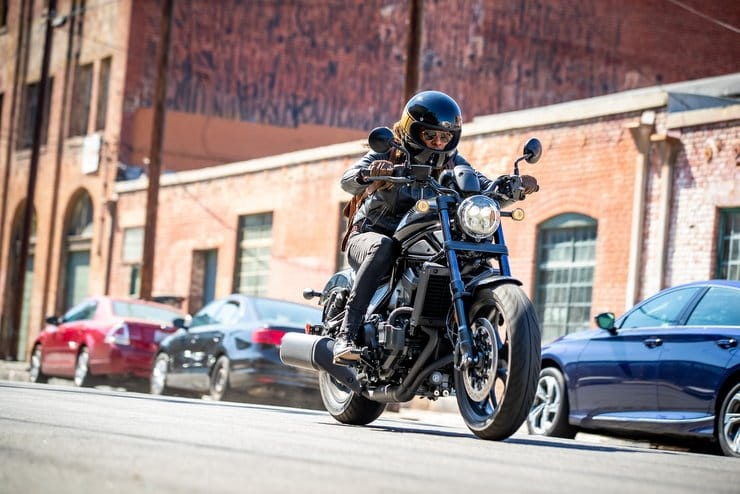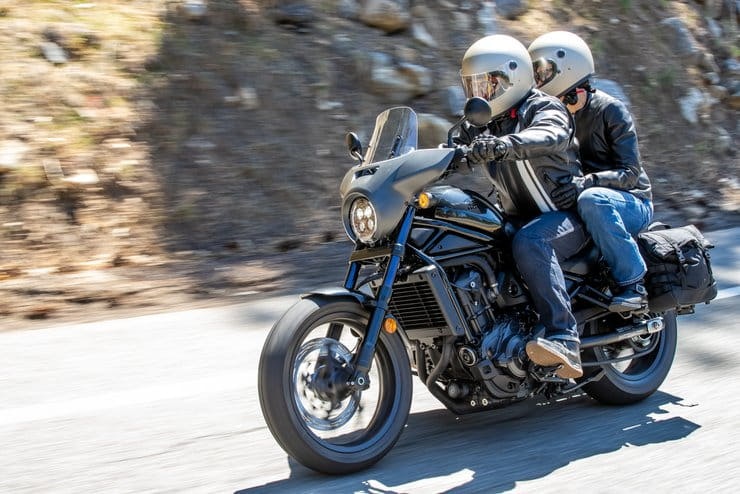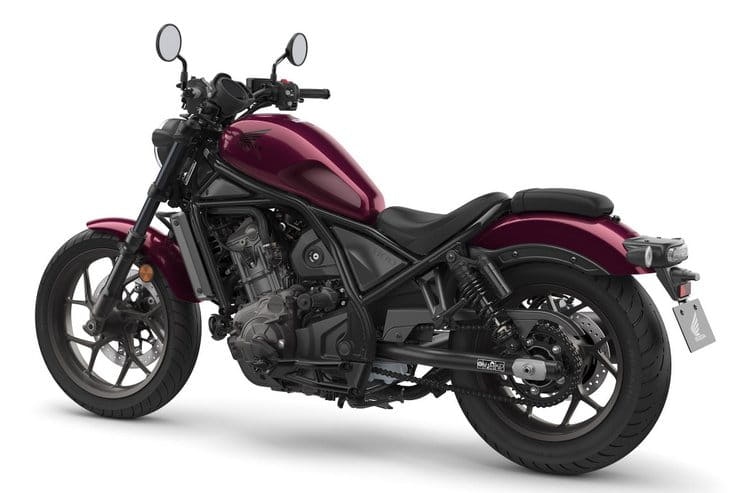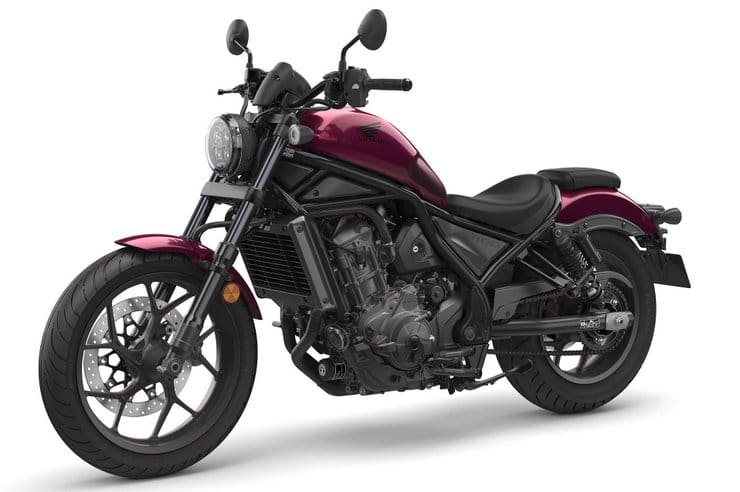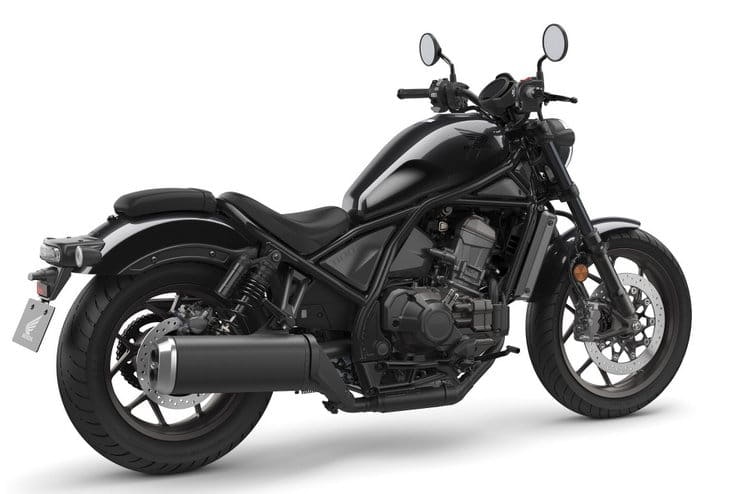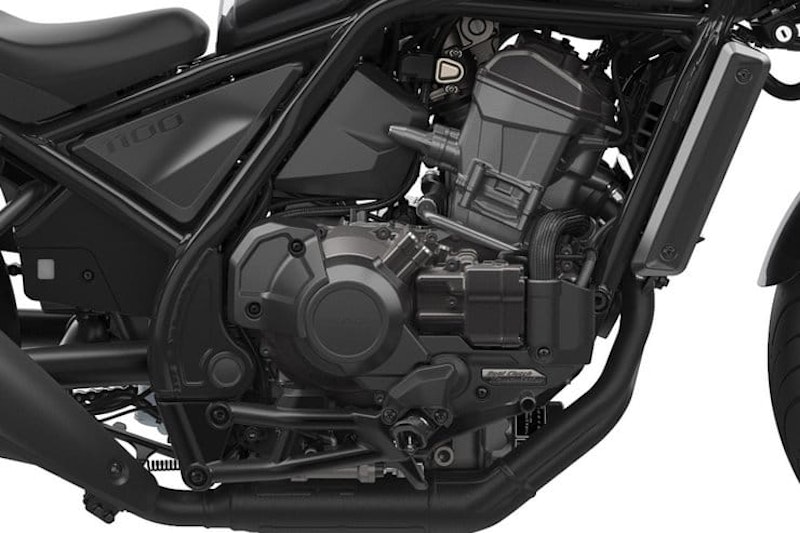Honda Rebel 1100: new big bobber confirmed for 2021
By Ben Purvis
Motorcycle Journalist
24.11.2020
Last month we revealed patent applications that confirmed Honda was developing a new Rebel 1100 powered by the engine from the Africa Twin – and now the firm has officially announced exactly that machine.
The CMX1100 Rebel, to give the bike its full title, combines a revised version of the Africa Twin’s 1084cc parallel twin engine with a tubular steel frame and a grownup version of the CMX500 Rebel’s bobber styling to bring Honda back to a section of the cruiser market that it hasn’t competed in for years.
While any bike with a litre-plus engine is arguably ‘big’, the Rebel 1100 is decidedly small and lithe when compared to rival cruisers and bobbers. Its 223kg wet weight is less than the dry mass of Triumph’s Bonneville Bobber (228kg), and well under the 252kg wet weight that Indian’s Scout Bobber and Harley-Davidson’s Forty-Eight share. And even though the Africa Twin-based engine has been retuned for mid-range thrust rather than peak power, the Rebel 1100’s 86bhp (at a low 7000rpm) is 10hp more than the Triumph has on offer.
It’s physically small, too. The Africa Twin engine was developed to be particularly compact, with its UniCam SOHC, 4-valve cylinder head and semi-dry sump, and that helps Honda keep the Rebel’s seat down to a lowly 700mm.
Changes for the engine compared to the Africa Twin version include a 32% heavier flywheel, new cams to change the valve timing and lift, and new electronic settings. Low-end grunt is the focus, so torque peaks at 72lbft and 4750rpm. That’s 5lbft less than the Africa Twin, but a significant 1500rpm lower in the rev range.
Honda’s DCT twin-clutch gearbox is an option, offering seamless shifts and either fully-automatic or finger-operated gear changes using paddles on the left bar while eliminating the clutch lever. It adds 10kg to the weight, but for long-distance or stop-start traffic it’s a tempting option – as reflected in the fact Honda has sold more than 140,000 DCT-equipped bikes in Europe over the last decade.
In terms of electronic kit, the Rebel 1100 steers clear of the latest trend for massive TFT displays but still has plenty of gadgets on offer. There’s traction control, of course, plus wheelie control and ride-by-wire throttles offering three riding modes – standard, rain and sport – and a user-definable setting. Each mode preselects settings for the TC, wheelie control, power delivery and engine braking, and alters the DCT’s shift patterns if the dual-clutch transmission is fitted.
The dashboard is a simple, round LCD display similar to that of the smaller Rebel 500, while the lights are all LED units, with four separate bulbs in the circular headlight. There’s a surprisingly capacious 3 litres of storage and a USB-C socket under the seat, which is unlocked via the ignition barrel on the left hand side of the frame, so you don’t have to remove the key to open it.
The styling is very much in the Rebel mould, with all-metal bodywork including the front and rear mudguards and a pillion pad that unbolts to leave a clean, single-seat look.
Honda hasn’t gone over the top with the suspension, so there are right-way-up 43mm cartridge forks at the front and a pair of remote-reservoir shocks at the back, with adjustment limited to preload at each end.
The wheels are cast alloy, with 130/70-18 rubber at the front and a smaller-diameter 16in rear carrying a wide 180/65-16 tyre. Somewhat surprisingly, Honda is using a single front brake disc, albeit a large 330mm one gripped by a monoblock four-pot radial caliper.
While bobbers aren’t really about handling, Honda claims there’s enough ground clearance to reach a 35 degree lean angle in either direction.
Unsurprisingly, the base Rebel 1100 is something of a black canvas for modifications, so Honda is offering two ranges of bolt-on parts. The ‘Street’ range includes a different seat design, a rear rack, headlight fairing, a short front fender and wheel rim decals, while ‘Tour’ line features the alternative seats, a pillion backrest, a screen, a luggage rack and fabric saddlebags.
How much for Honda’s take on the bagger theme? At £8999 the base model scores a psychological win by sneaking under the £9k mark, and means it’s a substantial £1650 cheaper than a Bonneville Bobber and £3k less than an Indian Scout Bobber, two of its closest rivals in terms of size and performance. The DCT-equipped Rebel 1100 also undercuts both, although at £9899 the margin is considerably smaller.
Arguably the closest rival to the Rebel on price is Harley-Davidson’s £9995 Forty-Eight, but it lags significantly compared to the Honda on power and is set to be dropped from the European market, along with the rest of the Sportster range, due to Euro5 rules.
*Read our full CMX1100 Rebel review here*
Share on social media:
